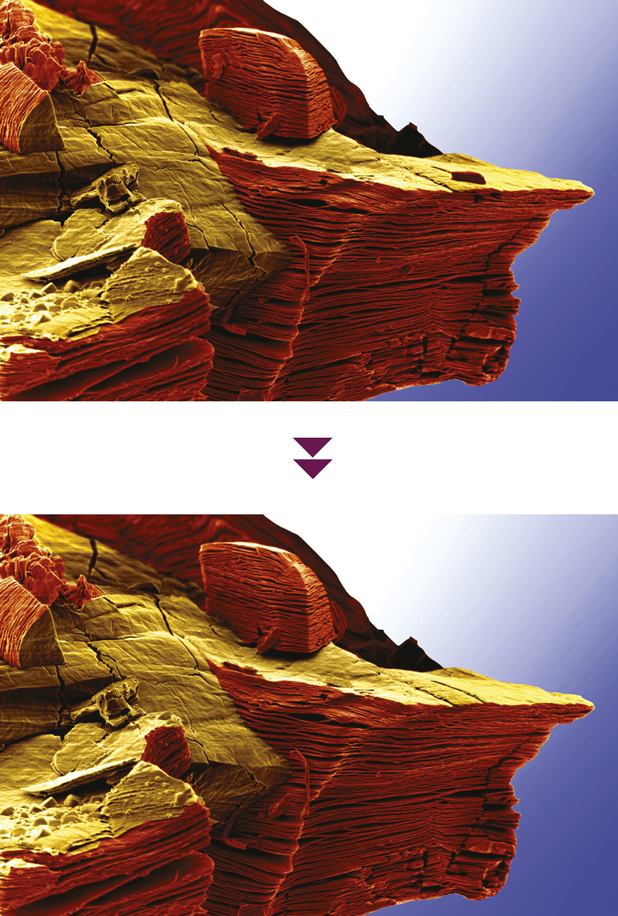A cliff of the two-dimensional world
When the layered, ternary compound, Ti3AlC2, is placed in hydrofluoric acid, the Al layers are selectively etched away resulting in two-dimensional (2D) layers of Ti3C2, that are weakly bonded to each other. The image shows several particles of the compound after the acid treatment, where exfoliation is obvious. Like graphene, individual layers can be isolated and their properties explored. Since Ti3AlC2 is a member of a large family of layered solids called MAX phases—that number over 60—and given the similarities with graphene, we are calling this new family of 2D solids “MXene.” The MAX phases—M is an early transition metal, A is an A-group element, and X is either C or N—are machinable ternary carbides and nitrides that have been explored extensively at Drexel University over the past 15 years. This image represents a new frontier in the world of 2D materials that will indubitably play an important role in the future. The width of the image is 20 μm.
Babak Anasori, Michael Naguib, Yury Gogotsi, Michel W. Barsoum, Drexel University, USA

Cubing the sphere
Calcium carbonate crystal mineralized on a chitosan substrate. This image was taken with the secondary electron detector on a variable pressure field-emission scanning electron microscope at an accelerating voltage of 6 kV. The magnification is 5500x.
Philipp M. Hunger, Drexel University, USA






